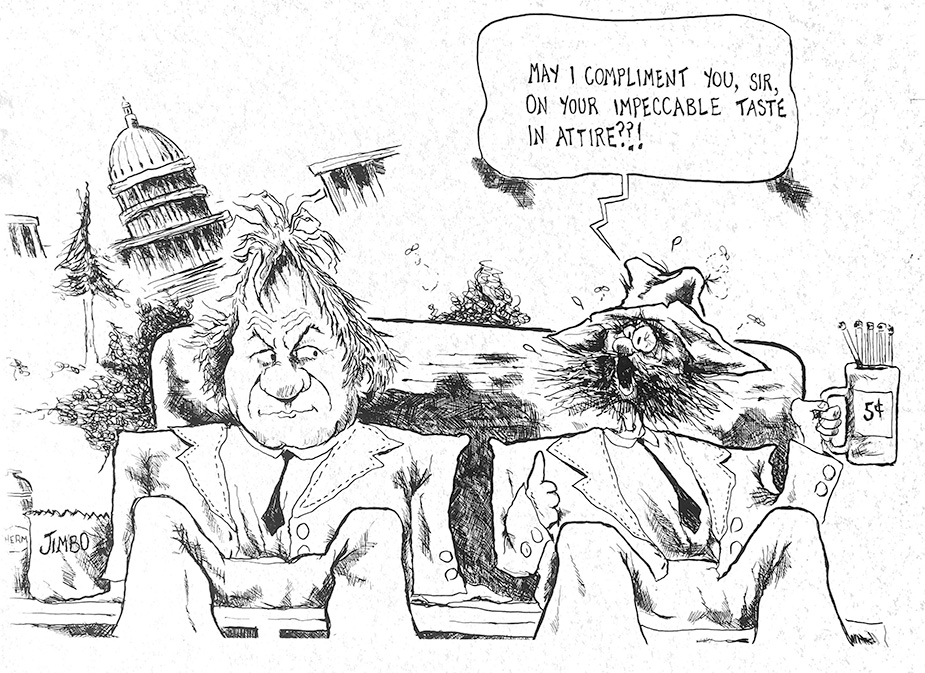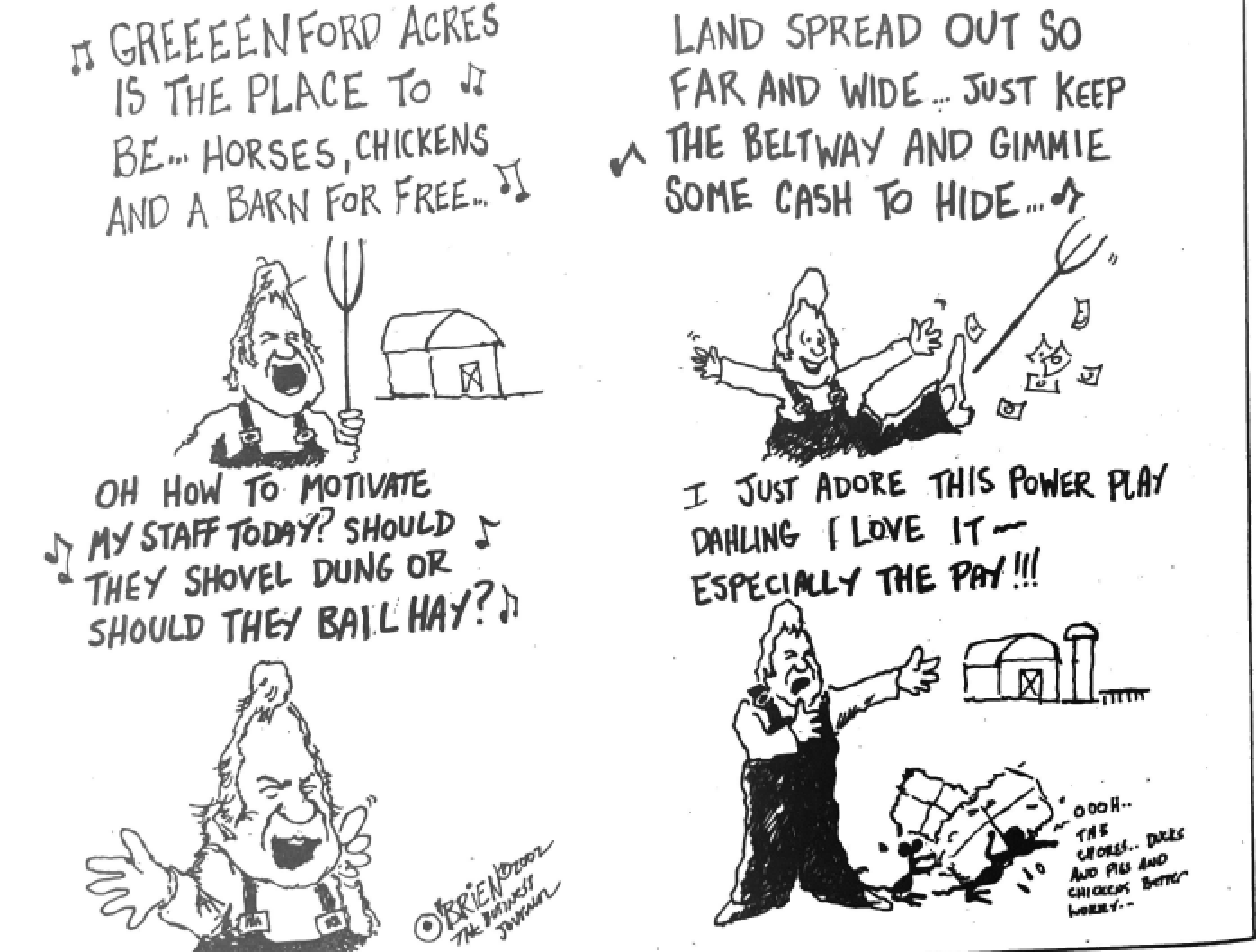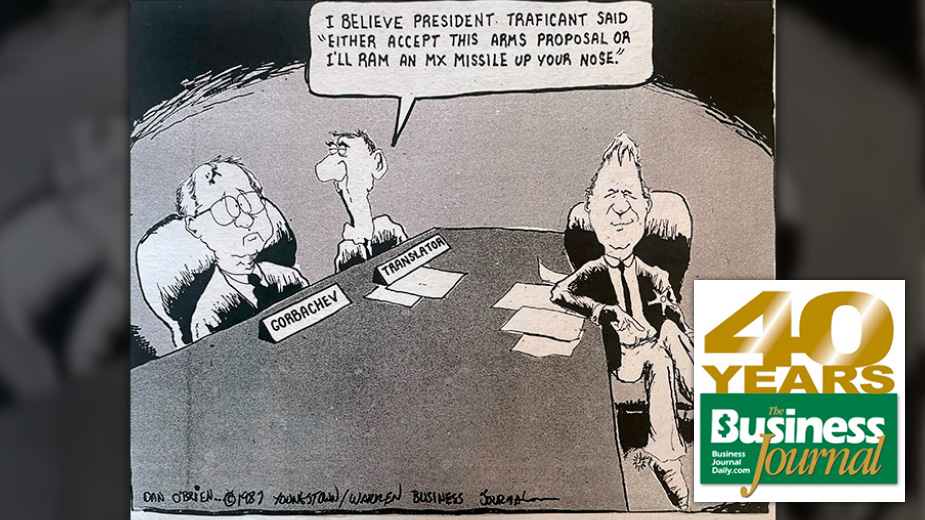YOUNGSTOWN, Ohio – If there were a single political figure that defined the post-industrial era of the Mahoning Valley, it was the late James A. Traficant Jr.
The son of a truck driver – as he often reminded his supporters, detractors and everyone else – Traficant personified the angry, anti-establishment sentiment that gripped much of the region in the wake of the steel shutdowns.
As sheriff of Mahoning County, he elected to go to jail for contempt of court rather than execute court orders to evict unemployed steelworkers from their homes (He would soon serve those orders anyway but you get the symbolism). To further enhance his image of a tough guy from a struggling steel town, he beat a federal indictment – acting as his own attorney, no less – that charged him with accepting bribes from local mobsters to help fund his 1980 run for sheriff.
The legend was born.
It was enough to carry him to Washington, D.C., in 1984, when the people of what was Ohio’s 17th District elected Traficant as their next congressman.
Traficant’s brash, no-holds barred, often profane, crude, ridiculous, humorous, and sometimes unconscionable style propelled him to national attention. His floor speeches – in most cases, tirades – would conclude with “Beam Me Up!” a phrase from the TV series “Star Trek” used when a crew from the Starship Enterprise requested to be teleported from the surface of some alien world that’s run amok.
While all of this served Traficant well, it was an absolute selfish joy as a cartoonist. In many ways, I feel honored to have chronicled much of his tenure in and out of office. In March 1987, I drew my first cartoon for The Business Journal. Fittingly, it was of Jim Traficant. Thereafter followed three decades drawing the congressman’s cone-shaped head, his scrambled hairstyle (later revealed to be a toupee), his flamboyant polyester suits (although a closer look revealed they were at times made of a swankier, silk-like material), and cowboy boots. Mix this with the congressman’s bombastic, bullying demeanor and unruly behavior and the cartoons often drew themselves.
During one local television appearance, the colorful congressman produced a quick caricature sketch I drew of him and, half-jokingly, threatened to “take that pen and shove it where I can’t say on TV.”
I must admit, I loved it.
In the Mahoning Valley, he could do no wrong, as voters overlooked his actions and indiscretions. Every two years, the congressman handily won re-election.
In the end, this sense of invulnerability proved his downfall. In 2002, a federal jury convicted the congressman on 10 counts of bribery, racketeering and tax evasion. The U.S. House of Representatives voted to expel him from Congress.
Traficant spent seven years in federal prison. He attempted to run for his old seat as an Independent from his jail cell. He lost.
After his release, Traficant again tried to regain his House seat. He lost once more. The community had moved on.
Traficant died Sept. 27, 2014, at age 73, days after a tractor accident on his farm in Greenford.
Through it all were at least 150 cartoons drawn across the congressman’s career, marking his time in Congress, his indictment, conviction and post-prison life. I selected a few that chronicle his story.





Pictured at top: 1987: It didn’t take long for Traficant to parlay his one-minute sound bites on the House floor to a potential bid for the presidency in 1988. How would the former sheriff negotiate an arms pact with Mikhail Gorbachev, then the premier of the Soviet Union?
